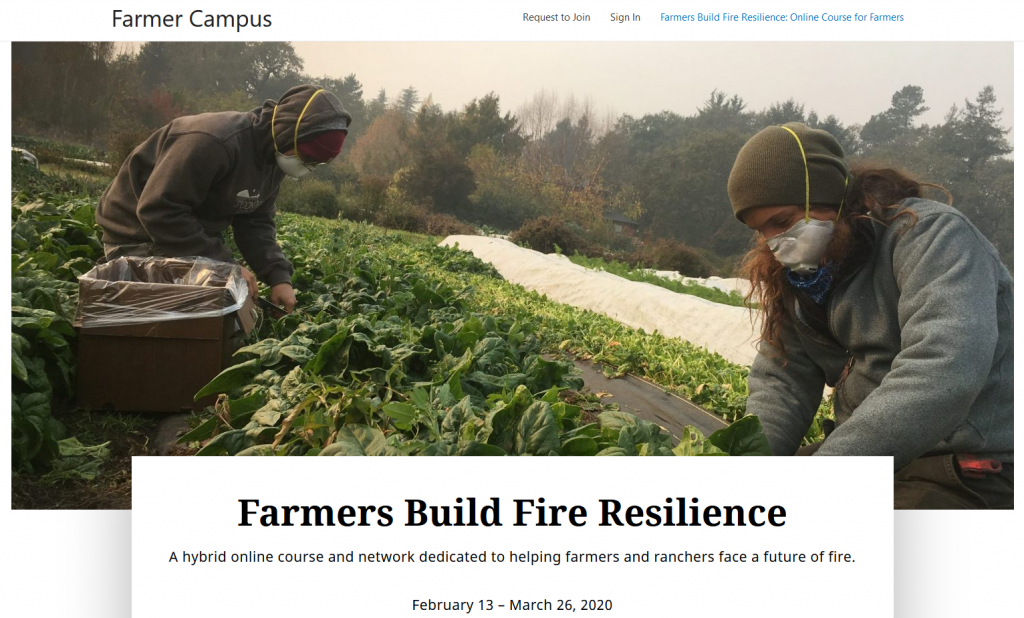Crisis Gardening: Fresh Food Fast
Food security should be job number one for everyone right about now. As our food supply is under increasing threat, taking matters into your own hands (by working with the soil and nature’s forces) can provide both food and sanity. You’d be amazed how much food you can grow in a small amount of space and how good you’ll feel working with living things. What are you waiting for?
Pathogens and the Loss of the Buffering Effect
If you view the manner in which humans have inhabited the Earth, you can see it as a monoculture. This, as is discussed in the video, is the problem where the absence of organisms diversity leads to conditions where pandemics can occur wiping out entire populations of the impacted species. Is the answer setting aside vast areas of the Earth to be wild, free from human habitat? Is that any sort of guarantee that humans will remain pandemic free? The separation can never be complete. Why do we deny the fact that we are nature and meant to live embedded amongst a diversity of species? Maybe our designed habitat needs to change. Let us consider an end to anthropocentrism and a shift to ecocentrism or biocentrism or biosynergism. Something like that. [Note: new study shows wild habitat loss increases transmission of zoonotic diseases to humans.]
Planting trees to save the planet!
Farmers Build Fire Resilience

Having a background in both agriculture and disasters led me to develop course materials for an on-line course for farmers and ranchers on how to prepare for, mitigate against, respond to, and recover from, projected increased incidents of wildfire. While the course was inspired by the record-setting conflagrations in northern California of 2017-2018 which impacted small farmers and ranchers, attendees are from a number of states and Canada.
The Promise of Biomimicry
Becoming a Spokesperson on Deep Adaptation

Christian Stalberg, human habitat relocalization and biomimicry evangelist in the Sierra Nevada of California, USA. Professional backgrounds in: energy efficient buildings; disaster readiness; villagification; farming; appropriate technology; telecomputing; construction; cooperatives; intentional communities and ecovillages. “Because of climate chaos, we are all vulnerable to lifeline (e.g. food, water, energy) failures, and should be prepared.”
– from Source a Spokesperson on Deep Adaptation by Jem Bendell
‘Wood wide web’—the underground network of microbes that connects trees—mapped for first time

A fungus known as a Dermocybe forms part of the underground wood wide web that stitches together California’s forests.
Kabir Gabriel Peay
‘Wood wide web’—the underground network of microbes that connects trees—mapped for first time
Trees, from the mighty redwoods to slender dogwoods, would be nothing without their microbial sidekicks. Millions of species of fungi and bacteria swap nutrients between soil and the roots of trees, forming a vast, interconnected web of organisms throughout the woods. Now, for the first time, scientists have mapped this “wood wide web” on a global scale, using a database of more than 28,000 tree species living in more than 70 countries.
“I haven’t seen anybody do anything like that before,” says Kathleen Treseder, an ecologist at the University of California, Irvine. “I wish I had thought of it.”
Before scientists could map the forest’s underground ecosystem, they needed to know something more basic: where trees live. Ecologist Thomas Crowther, now at ETH Zurich in Switzerland, gathered vast amounts of data on this starting in 2012, from government agencies and individual scientists who had identified trees and measured their sizes around the world. In 2015, he mapped trees’ global distribution and reported that Earth has about 3 trillion trees.
Inspired by that paper, Kabir Peay, a biologist at Stanford University in Palo Alto, California, emailed Crowther and suggested doing the same for the web of underground organisms that connects forest trees. Each tree in Crowther’s database is closely associated with certain types of microbes. For example, oak and pine tree roots are surrounded by ectomycorrhizal (EM) fungi that can build vast underground networks in their search for nutrients. Maple and cedar trees, by contrast, prefer arbuscular mycorrhizae (AM), which burrow directly into trees’ root cells but form smaller soil webs. Still other trees, mainly in the legume family (related to crop plants such as soybeans and peanuts), associate with bacteria that turn nitrogen from the atmosphere into usable plant food, a process known as “fixing” nitrogen.
The researchers wrote a computer algorithm to search for correlations between the EM-, AM-, and nitrogen-fixer–associated trees in Crowther’s database and local environmental factors such as temperature, precipitation, soil chemistry, and topography. They then used the correlations found by the algorithm to fill in the global map and predict what kinds of fungi would live in places where they didn’t have data, which included much of Africa and Asia.
Local climate sets the stage for the wood wide web, the team reports today in Nature. In cool temperate and boreal forests, where wood and organic matter decay slowly, network-building EM fungi rule. About four in five trees in these regions associate with these fungi, the authors found, suggesting the webs found in local studies indeed permeate the soils of North America, Europe, and Asia.
By contrast, in the warmer tropics where wood and organic matter decay quickly, AM fungi dominate. These fungi form smaller webs and do less intertree swapping, meaning the tropical wood wide web is likely more localized. About 90% of all tree species associate with AM fungi; the vast majority are clustered in the hyperdiverse tropics. Nitrogen fixers were most abundant in hot, dry places such as the desert of the U.S. Southwest.
Charlie Koven, an Earth system scientist at the Lawrence Berkeley National Laboratory in California, applauds what he says is the first global forest microbe map. But he wonders whether the authors missed some important factors that also shape the underground world. Hard-to-measure processes such as nutrient and gas loss from the soil could affect where different microbes live; if so, the study’s predictions could be less accurate, he says.
Despite such uncertainties, having the first hard numbers for which tree-associated microbes live where will be “very useful,” Treseder says. The findings could, for example, help researchers build better computer models to predict how much carbon forests will squirrel away and how much they will spew into the atmosphere as the climate warms, she says.
Crowther, however, is ready to make a prediction now. His results suggest that as the planet warms, about 10% of EM-associated trees could be replaced by AM-associated trees. Microbes in forests dominated by AM fungi churn through carbon-containing organic matter faster, so they could liberate lots of heat-trapping carbon dioxide quickly, potentially accelerating a climate change process that is already happening at a frightening pace.
That argument is “a little bit more tenuous” to Treseder. She says scientists are still puzzling out how different soil fungi interact with carbon. But, she adds, “I’m willing to be convinced.”
Environmental Debt: The Hidden Costs of a Changing Global Economy
Amy Larkin nails it when she says “no nature, no business”. Business as usual is killing the earth. The evidence is overwhelming. Learn more at Science Direct’s Environmental Externality.
